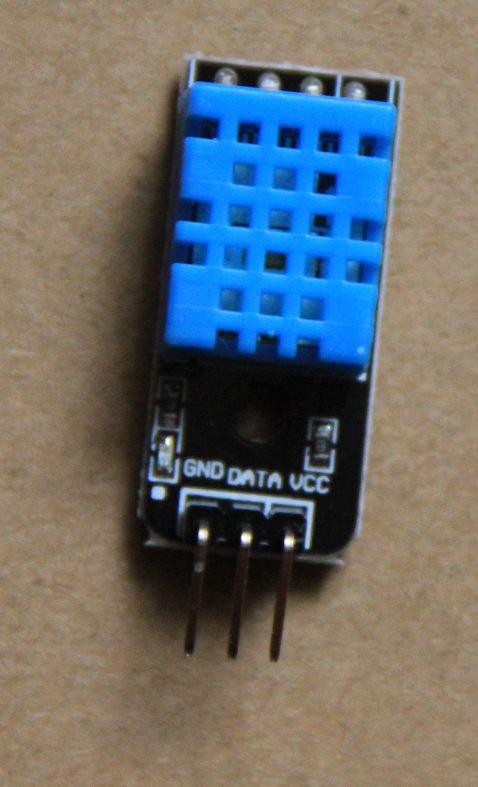
Difference: Lecture8:DHT11TemperatureAndHumiditySensor (1 vs. 2)
Revision 22017-10-20 - uli
| Line: 1 to 1 | |||||||||||||||||||||||||||||
|---|---|---|---|---|---|---|---|---|---|---|---|---|---|---|---|---|---|---|---|---|---|---|---|---|---|---|---|---|---|

Slide 1: DHT11 Temperature and Humidity Sensor | |||||||||||||||||||||||||||||
| Added: | |||||||||||||||||||||||||||||
| > > | Lecture 8Uli RaichUCC semester 2017/2018A single GPIO pinWe have seen how we can drive an LED from a single GPIO pin programmed as output pin or how we can read its state through another GPIO pin, programmed as input pin.Can one do more with a single pin? DHT11 pinout
Serial ProtocolHow can we, with a single pin
and the DHT11 implements its own serial protocol Reading and understanding the data sheetLetís have a look at the DHT11 data sheet
How does a resistive humidity measurement work?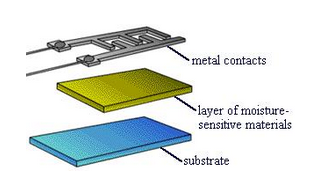
Resistive Humidity Measurement(2)
The NTC Thermistor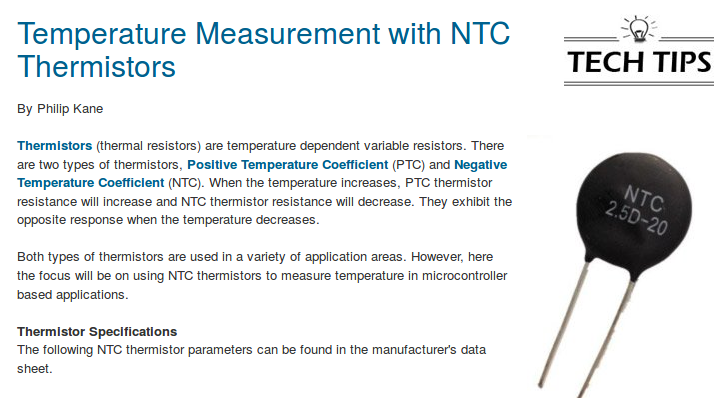
A processor on chipIn order to convert these measurements into numeric values and send them to the end user through a serial protocol, a preprogrammed micro-controller must be implemented on the chip. In the case of the DHT11 this is an 8 bit micro-controller, which does the conversion into binary and which creates the serial protocolText from the data sheet
Measurement Precision
How to connect the device
Powering the deviceAs we can see from the specs below, the DHT11 power line can be directly connected to the cobbler 3.3V (or the 5V) line
Single Wire two way interface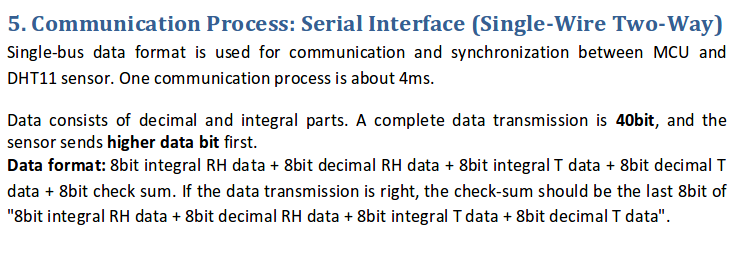
Overall Communication Process
How to initiate a Measurement?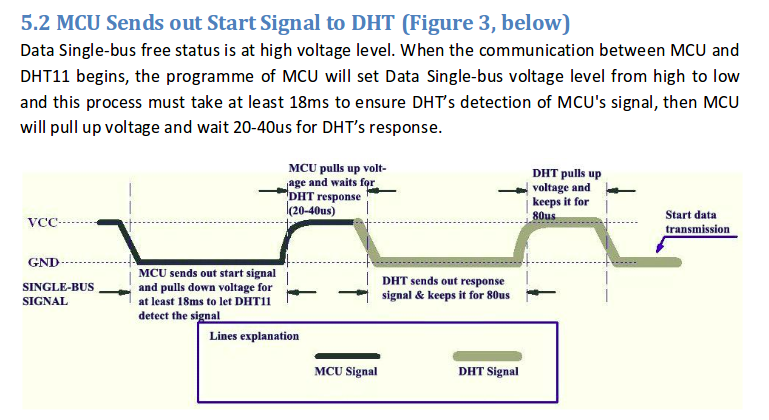
What does this mean for our program?We must:
Response from DHT11
| ||||||||||||||||||||||||||||
| %SLIDESHOWEND% | |||||||||||||||||||||||||||||
| Line: 10 to 143 | |||||||||||||||||||||||||||||
Comments\ No newline at end of file | |||||||||||||||||||||||||||||
| Added: | |||||||||||||||||||||||||||||
| > > |
| ||||||||||||||||||||||||||||
Revision 12017-10-20 - uli
| Line: 1 to 1 | ||||||||
|---|---|---|---|---|---|---|---|---|
| Added: | ||||||||
| > > |

Slide 1: DHT11 Temperature and Humidity Sensor--Comments | |||||||
View topic | History: r7 < r6 < r5 < r4 | More topic actions...
Ideas, requests, problems regarding TWiki? Send feedback
